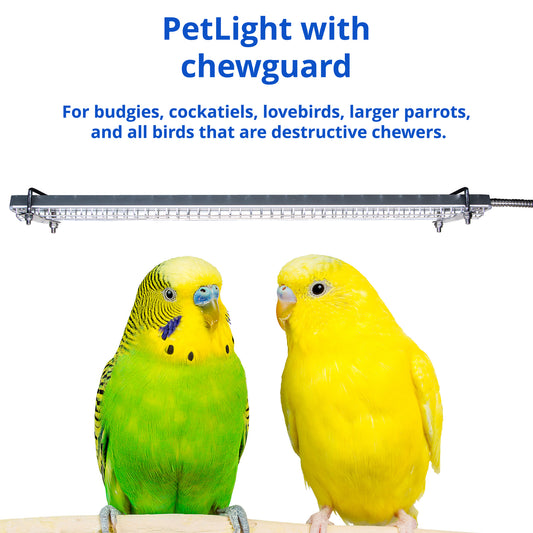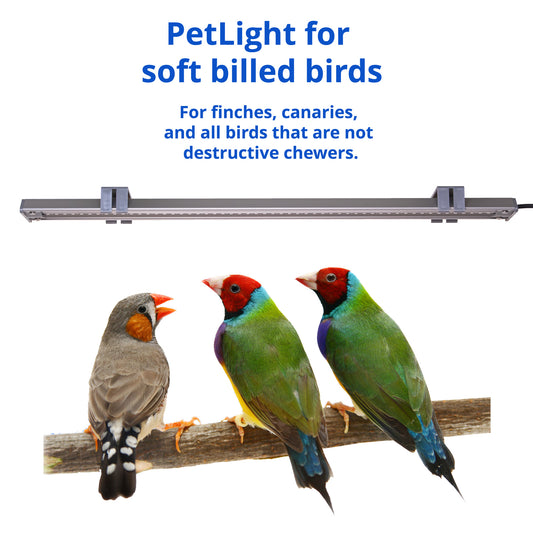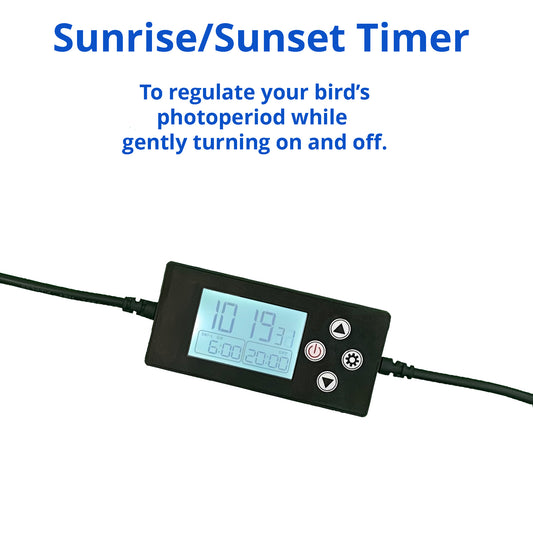Bird Lights Explained: What to Know Before Buying
Share

Choosing the right light for your bird is more than picking a bright bulb. It's about replicating the right conditions to support your bird’s natural rhythm indoors. This guide breaks down what really matters when shopping for bird lights — and what to avoid.
Why Do Birds Need Artificial Light Indoors?
In nature, birds are guided by the sun. Indoors, however, they rely entirely on the light you provide. And while a room may seem bright to us, birds often experience their environment very differently.
One key principle:
Birds need 10–12 hours of consistent, high-quality light every day to mirror the length of daylight in their natural habitat. This daily cycle keeps them in tune with the world around them — especially important in winter when natural days are shorter.
Why Natural Light Isn’t Enough
Natural daylight through windows often isn’t sufficient — especially inside a cage. Shadows, obstructions, and indoor layouts mean that even the sunniest room can leave your bird in partial light for most of the day.
And that brings us to a common issue:
“Birds love a lot of light, and a cage is a hard thing to light. Even a brightly lit room will not supply the amount of light birds prefer inside their cage. That is why our light mounts directly to the cage, putting all the light in the bird’s environment.”
Our simple mounting solution ensures that your bird gets the light exactly where they need it — no guesswork, no compromise.
Spectrum Matters — But Not All “Full Spectrum” Lights Are the Same
Some lights are labeled as “full spectrum” but are still designed for reptiles or general household use. They may emit light that’s too narrow in spectrum, too blue-heavy, or include harmful artificial UVB — which is not ideal for birds eyes.
While UVB from the sun is beneficial for birds, artificial is not in fact, high-quality bird lights should not include artificial UVB as studies have proven it to be harmful to bird eyes. While UVB is often marketed as “natural,” indoor birds don’t need direct UVB exposure — and overexposure can be problematic.
Instead, what matters most is a broad, rich visible spectrum — one that mimics the brightness and clarity of natural daylight without artificial ultraviolet radiation.
What to Look for in a Bird Light
Here’s what makes a great bird light:
✅ Broad-spectrum visible light (without UVB)
✅ Mounts directly to the cage for maximum exposure
✅ Flicker-free performance — constantly flickering light can cause discomfort, disrupt their daily rhythms, and even lead to anxiety
✅ Safe, bird-specific design — with chew guards and secure attachments
Final Thoughts
Not all lights are created equal. When you choose lighting that respects your bird’s needs — in terms of rhythm, brightness, and placement — you’re giving them an indoor environment that feels natural, balanced, and secure.
HappyBird lights are made specifically with birds in mind. No unnecessary UV. No compromise on brightness. Just the kind of lighting your bird prefers — right inside the cage, every day.




